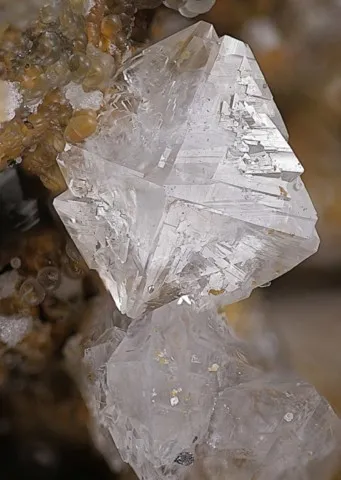GISMONDINE
Class : Silicates
Subclass : Tectosilicates
Crystal system : Monoclinic
Chemistry : Ca2Al4Si4O16 9H2O
Rarity : Uncommon
Gismondine (or gismondite) belongs to the group of zeolites. It occurs as filling of cavities in olivine basalts, sometimes in nepheline basalts or leucite tephrites. It was named in honor of the Italian mineralogist Carlo Giuseppe Gismondi who studied the mineral. Gismondite occurs in bipyramidal, pseudoquadratic crystals which are in reality twins by interpenetration, of 2 cm at most. Millimetric crystals can form rosette aggregates or radiated spherolites up to 15 mm in diameter. Epitaxies with phillipsite are common. Gismondite is white, gray, bluish or reddish in color. Like most zeolites, its density is low (2.2) because of the abundance of water in its structure.
Main photo : Gismondine from Graulay Quarry, Germany © Volker Betz
Gismondine in the World
Twinning
Twins are common for this mineral species, particularly on {101} and form crosses.
Fakes and treatments
No fakes recorded for this mineral species.
Hardness : 4.5
Density : 2.20 to 2.26
Fracture : Conchoidal
Streak : White
TP : Translucent to transparent
RI : 1.525 to 1.550
Birefringence : 0,016
Optical character : Biaxial -
Pleochroism : None
Fluorescence : None
Solubility : -
Magnetism : None
Radioactivity : None





